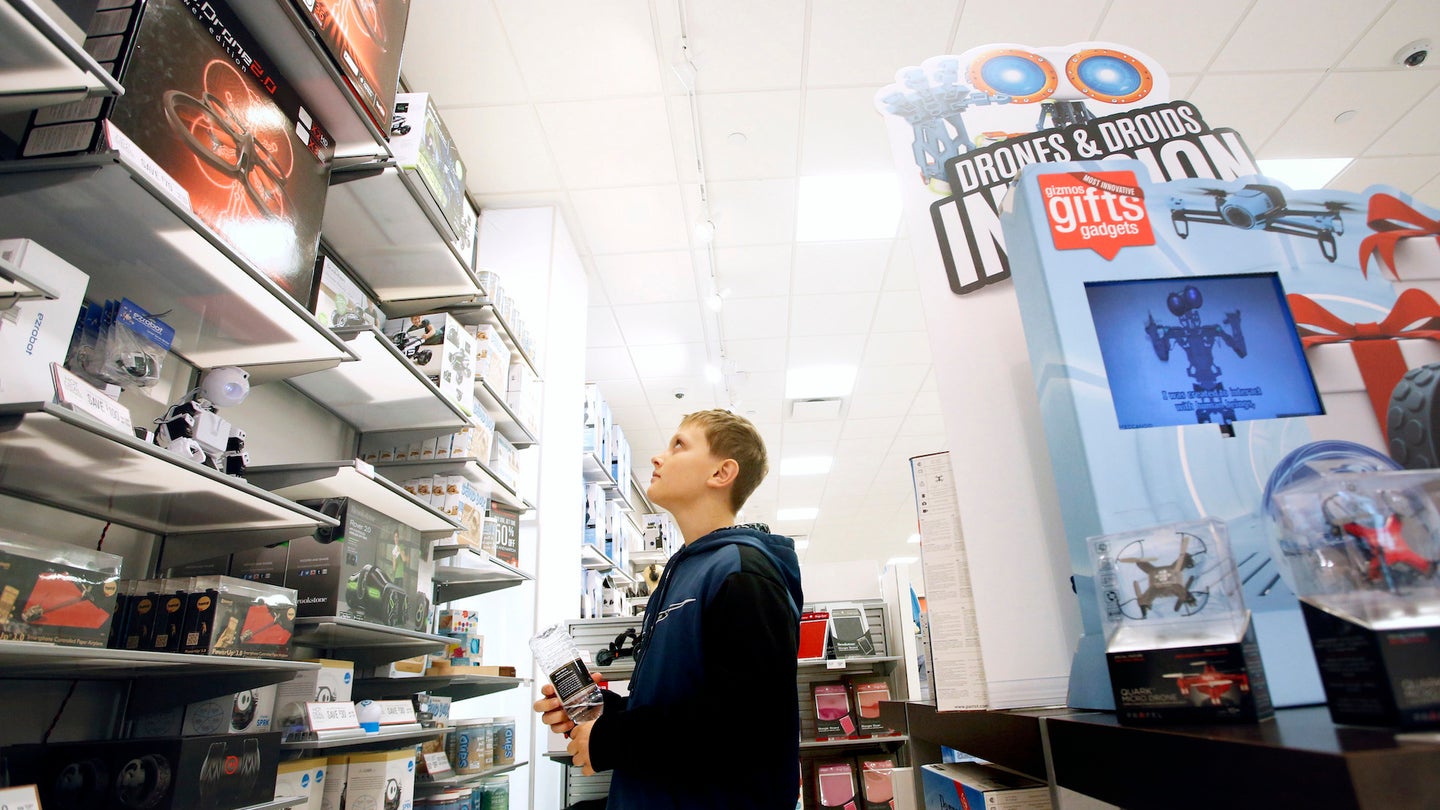The FAA Projects the Commercial Drone Industry to Grow Fourfold by 2022
The federal agency recently updated its projected numbers of commercial and recreational drone estimates and its results might surprise you.

Last week, the Federal Aviation Administration updated its projected numbers of unmanned aerial vehicles in U.S. airspace, revealing an estimated growth from the current number of 110,000 UAVs to 450,000 in 2022. With the White House recently ramping up efforts to establish a cohesive set of regulations regarding domestic commercial drone use, and recreational drone sales continuing to increase, this updated estimate isn’t a shock, though still pretty heartening for the industry at large.
According to The Wall Street Journal, the FAA also increased its previous projection regarding commercial drone pilots by 70,000, now predicted to reach more than 300,000 by 2022. With the positive industry indicators, the FAA envisions the total commercial drone population to exceed 600,000 in the early 2020s. The agency’s published document details new potential drone designs that would “become operationally more efficient and safe, battery life expands and regulatory constraints are reduced.”
While the agency is glaringly confident in commercial drone growth, it’s reportedly not as convinced about the recreational sector, with the most recent expectations seeing it double to 2.4 million drones in 2021. Though this is, indeed, impressive, that number is about one million units short of the agency’s predictions in 2017. According to FAA analysts, the reason behind this lackluster prediction is a combination of ever-changing consumer tastes and market saturation.
We recently reported on the 2018 FAA UAS Symposium, during which the White House’s Deputy Chief Technology Adviser, Michael Kratsios, said, “We’re committed to helping our greatest innovators develop, test and deploy their technologies here in the U.S.” He added that the U.S. “cannot allow the promise of tomorrow to be hamstrung by the bureaucracy of the past.” Meanwhile, the U.K. certainly seems to be in agreement with that latter statement, as it is seriously considering to rid itself of the drone delivery industry-hampering beyond line-of-sight regulations posing as a challenge to commercial companies here in the U.S., as well.
Earl Lawrence, head of the FAA’s drone-integration office, reportedly told reporters and officials that he is considering unconventional methods to ramp up the pace of sensible deregulation. He told audiences to “Please come in” to request approvals, and “don’t wait for those new rules,” and that “we can write an even better rule down the line.” Perhaps most bold was that while lawmakers “could give us the authority” to move more swiftly, “I don’t wait for Congress.”
It’s exciting to hear so many reports of the government (aviation agency, and industry officials) determined and eager to conclude this seemingly endless trudge toward a cohesive, regulated drone network of laws and restrictions for U.S. airspace. It’s also important to remember that the primary hurdle has always been a careful, slow focus on safety standards. Fortunately for the public, the current acting FAA administrator, Dan Elwell, is aware of the priorities here, and that safety has to “continue to guide each step we take,” as it’s “the key to the front door of the national airspace system.” Stay tuned, as laws change, regulations take hold, and drones fill the skies.
